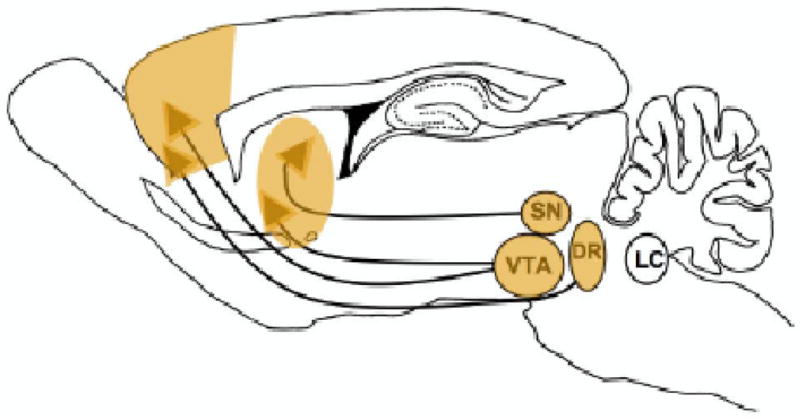Figure 3.

Brain regions impacted by nicotine exposure during the adolescent period. During adolescence, there is substantial plasticity in limbic circuitry including the amygdala, prefrontal cortex, and nucleus accumbens. The dopamine systems of the SN/VTA also undergo their last major phase of development during this period. These late maturing catecholaminergic projections possess functional nAChRs on the cell bodies and terminals that allow nicotine to alter their excitation and release. nAChRs have also been shown to alter the dopamine and serotonin transporter function in prefrontal cortex and nucleus accumbens. Thus, nicotine exposure during this time produces changes within the limbic and dopaminergic circuitry that underlies motivated behaviors, potentially enhancing the vulnerability to nicotine addiction during this time period. The serotonin system, originating in the dorsal raphe (DR), also appears to be affected by adolescent nicotine exposure. Nicotine-induced alterations in serotonin function may contribute to the increased incidence of mood disorders seen after adolescent smoking (see text for more detail).
